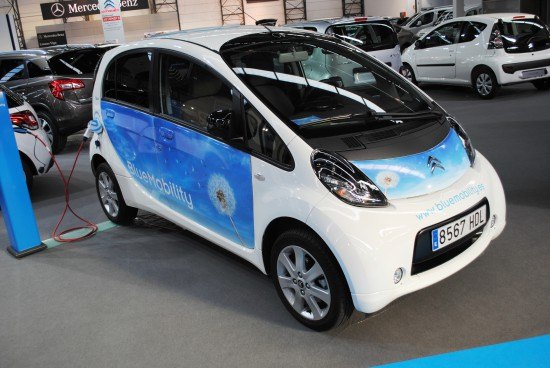#MitsubishiI-miev
Mitsubishi Puts the I-MiEV Out of Its Misery
It’s always a little sad to see an existing model discontinued. Well, almost always. Mitsubishi is taking the hint and officially killing the unloved i-MiEV — something we are willing to bet isn’t going to inspire an abundance of heartache within the driving community.
Despite being a pioneering electric car (and kind of cute), the i-MiEV was never what one might consider a volume vehicle. Since 2015, North America had frequently seen months where the little Mitsubishi couldn’t even break out of the single digit sales bracket. Last year, Canada sold a total of 86 units and the United States moved 94.
With a 62-mile range rating and one of the smallest interiors money can buy, it has always been poorly suited for the majority of American drivers’ needs and repeatedly slashing the price never made up the difference. While Nissan’s Leaf comes in almost $8,000 grand higher, $22,995 is still a lot to pay for something you don’t want — and nobody wanted an i-MiEV.
QOTD: Does Mitsubishi Need to Exist?
Thinking back to just over a decade ago, Mitsubishi was still in the full-line automaker business. For most needs, there existed an option at your Mitsubishi dealer, which then was a place with functioning lighting and definitely not a former Pizza Hut or Carl’s Jr.
But that’s all changed now, and it has me wondering — is there really a point to Mitsubishi, you know, being a thing?
Renault-Nissan Takeover Gives Mitsubishi a Chance to Dump Its Most Embarrassing Product
After inking the deal that brought Mitsubishi Motors under his corporate umbrella, Nissan-Renault chairman Carlos Ghosn said the acquisition would have a “massive” impact on the struggling automaker.
By sharing the alliance’s technology, platforms and engines, Mitsubishi can look forward to a brighter, product-filled future, he claimed. Full integration is still years away, but a new report sheds some light on the first all-new product born of the $2.29 billion deal.
Bark's Bites: Stop Saying There Aren't Any Bad Cars
Right up there with I wish they’d make a manual diesel wagon in brown, it’s among the most played-out tropes on the Internet.
There just aren’t any bad cars anymore.
This is generally followed by some recollection of a Saturn of the early ’90s that had a faulty engine, or perhaps some Brezhnev-era Soviet masterpiece. Blah blah blah nostalgia blah blah A Christmas Story blah blah. Enough.
There are plenty of bad cars out there, but the majority of people haven’t driven enough of them to know it. Fortunately (or unfortunately), I have. And I’m here to break the bad news to you: some cars suck. Maybe even the one in your very driveway.
TTAC Says These Are 2016's Ten Worst Automobiles Today, But The American Car Buyer Disagrees With A Number Of Choices
Let’s face it: the automotive enthusiast universe wasn’t clamouring for a sub-subcompact, three-cylinder Mitsubishi hatchback. Not surprisingly, the Mitsubishi Mirage ended up on TTAC’s list of 2016’s Ten Worst Automobiles Today.
But after TTAC named 2016’s best and worst vehicles earlier this week, we wondered whether the market agrees with the choices made by TTAC and The Best & Brightest. We know there are stark differences between the number of votes cast for vehicles such as the Mazda6 and the number of consumers who signed on the dotted line to buy a Mazda6. Will such stark differences appear when we look into the amount of support the American car-buying populace has for the very vehicles TTAC’s contributors and B&B despises?
Jeep Patriot* Is TTAC's 2016 Worst Automobile Today (And Here Are the Other Nine Losers)
It’s a Dodge Caliber festooned with a seven slot grille and boxy proportions. It exists for no other reason than to leverage the brand equity built up by decades of Jeep heritage. The Patriot*, according to your nominations, our writers, and your votes is — by far — TTAC’s 2016 Worst Automobile Today.
After all the votes were cast, a staggering 66.1 percent of you believed the Jeep Patriot to be the worst new vehicle money could buy. And, as many of you guessed, it’s not the only Fiat Chrysler Automobiles product in the Top 10.
PSA, Mitsubishi May End EV Partnership
PSA and Mitsubishi may discontinue their electric vehicle partnership in the next 12 months, according to PSA CEO Carlos Tavares.
Review: 2012 Mitsubishi I-MiEV
A rear-wheel-drive four-door hatchback with staggered wheels and a mere 2,579 pounds distributed 45/55. From the folks who gave us the Evo. Sounds awesome, doesn’t it? But the Mitsubishi i-MiEV (conversationally referred to as either the “i” OR the “meev”) isn’t that sort of car. Its focus is just as narrow as the Evo’s but could hardly be more different: the cheapest, most energy-efficient electric car you can buy in the United States. How cheap? The i-MiEV’s low-20s price (after a $7,500 tax credit) isn’t much higher than that of a Toyota Prius c, the cheapest, most energy-efficient hybrid.






















Recent Comments